Sweet Alyssum (Lobularia Maritima) Profile
Written by Iris
Oct 28 2021
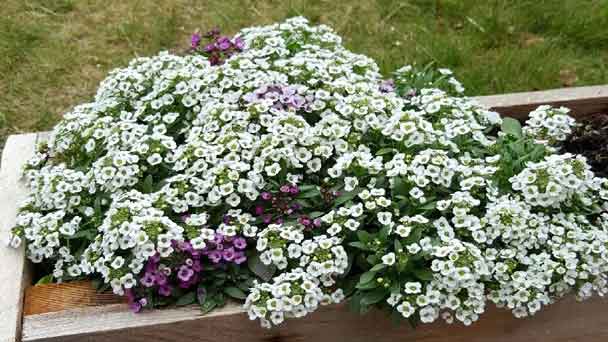
Sweet Alyssum (Lobularia maritima) produces persistent pink, white, purple and cream flowers. These beautiful flowers are easy to grow and are perfect as frames, ground covers, hanging baskets or potted plants. Their lovely scent is a favourite of cottage gardeners and they are perfect for bringing beneficial insects and bees into the garden.
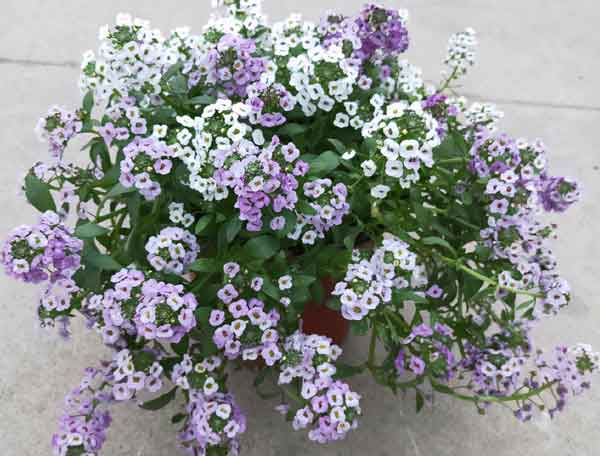
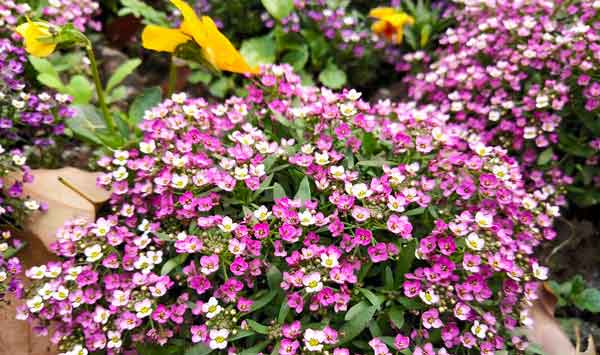
Take firm tip growth around 7–10cm long and place it in a pot with seed and cutting mix, or 50:50 peat and coarse propagating sand.
Remove the bottom two thirds of leaves and dip the bottom in rooting hormone.
Place in a propagator or pot covered with half of a clear 2 litre bottle, and position in partial shade. In around 6–8 weeks the cuttings should have taken root.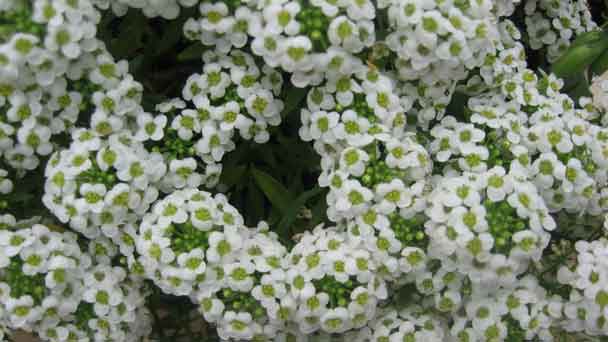
The use of alyssum flowers for certain medical uses has been around for centuries, and has been used around the world.
Some of the more popular medicinal uses include treating coughs, abdominal pain, treating rabies (please see a medical professional right away if you believe you have been exposed to the rabies virus), treating scurvy (please see a medical professional if you think you might have scurvy), removing excess fluids from your system, promoting urine secretion, supporting renal functions, and treating gonorrhea (again please see a medical professional before treating gonorrhea with alyssum flowers).
Although these uses may not be scientifically backed, there is evidence of people using sweet alyssum flowers to treat these conditions throughout history.
When used for medicinal purposes, you are supposed to eat the leaves, flowers, and stems when the plant is still young. Many recommend adding these parts of the plant to a salad. Eating alyssum leaves, flowers, and stems will not harm you unless you are allergic to the plant.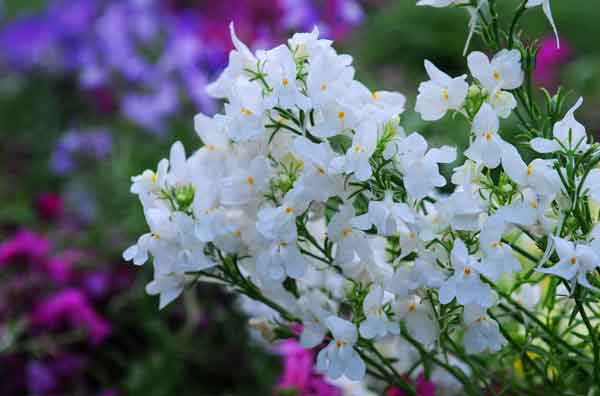
Sweet alyssum ‘Blushing Princess’ – produces variegated blooms in lavender and deep purple and white.
Sweet alyssum‘Royal Carpet’ – produces beautiful clusters of bright purple alyssum flowers which flourish throughout the summer.
Sweet alyssum‘Carpet of Snow’ – produces gorgeous mounds of fragrant white blooms.
Sweet alyssum‘White Knight’ – produces billowing bursts of sweetly fragranced blooms. Lovely in hanging baskets and cascading over edges.
Sweet alyssum‘Mountain Gold’ – produces cascades of bright yellow blooms that creep over rocks, edges, planters, and raised beds.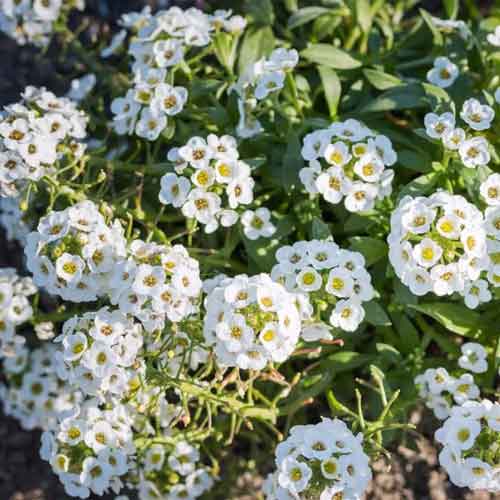
Read Next:
Top 10 Most Beautiful Roses in the World
Top 10 Most Beautiful Flowers in the World
26 Best Autumn Flowers to Plant for Fall Color in Garden
Sweet Alyssum PictureSweet Alyssum InfoSweet Alyssum DistributionHow to Grow & Care for Sweet AlyssumHow to Grow Sweet AlyssumHow to Care for Sweet AlyssumSweet Alyssum UsesSweet Alyssum VarietiesSweet Alyssum Common Pests/DiseasesSweet Alyssum Design TipsSweet Alyssum Companion PlantsNemesiaStockPansy
Sweet Alyssum Picture

Sweet Alyssum Info
| Botanical Name | Lobularia maritima |
| Common Names | Sweet alyssum, alyssum, carpet flower |
| Plant Type | Herbaceous perennial |
| Mature Size | 3–9 in. tall, 6–12 in. wide |
| Sun Exposure | Full sun, partial shade |
| Soil Type | Moist but well-drained |
| Soil pH | Neutral to acidic |
| Bloom Time | Spring, Fall |
Sweet Alyssum Distribution
Sweet alyssum is a ground cover plant with tiny white, pink, cream, or purple flowers. Sweet Alyssumis classically found in coastal areas, but it will grow in most zones during the growing season. Technically a perennial, Sweet Alyssum is usually grown as an annual in most regions of the United States. In warmer zones where it is grown as a perennial, Sweet Alyssum doesn't last as long as other perennial plants.
How to Grow & Care for Sweet Alyssum
How to Grow Sweet Alyssum
- With Seeds
- With Cuttings
Take firm tip growth around 7–10cm long and place it in a pot with seed and cutting mix, or 50:50 peat and coarse propagating sand.
Remove the bottom two thirds of leaves and dip the bottom in rooting hormone.
Place in a propagator or pot covered with half of a clear 2 litre bottle, and position in partial shade. In around 6–8 weeks the cuttings should have taken root.
How to Care for Sweet Alyssum
- Light
- Soil
- Water
- Temperature and Humidity
- Fertilizer
- Pruning

Sweet Alyssum Uses
Sweet alyssum makes an excellent companion plant in the garden. Some plants, when grown together, can boost each other's growth, fertility, yields, protect them from pests, and attract beneficial insects. These beautiful flowers are easy to grow and are perfect as frames, ground covers, hanging baskets or potted plants. Read More: Top 30 Best Indoor Hanging Plants That Beauty Your Home- Here are some ways to use sweet alyssum in your garden:
- Use alyssum to lure aphids away from vegetable plants.
- To attract beneficial pollinators to your gardens.
- Fills open space in the garden to deter weeds—plant in bare spots or in row spaces between vegetables.s
The use of alyssum flowers for certain medical uses has been around for centuries, and has been used around the world.
Some of the more popular medicinal uses include treating coughs, abdominal pain, treating rabies (please see a medical professional right away if you believe you have been exposed to the rabies virus), treating scurvy (please see a medical professional if you think you might have scurvy), removing excess fluids from your system, promoting urine secretion, supporting renal functions, and treating gonorrhea (again please see a medical professional before treating gonorrhea with alyssum flowers).
Although these uses may not be scientifically backed, there is evidence of people using sweet alyssum flowers to treat these conditions throughout history.
When used for medicinal purposes, you are supposed to eat the leaves, flowers, and stems when the plant is still young. Many recommend adding these parts of the plant to a salad. Eating alyssum leaves, flowers, and stems will not harm you unless you are allergic to the plant.

Sweet Alyssum Varieties
Lots of alyssum varieties are available in colors that range from pinks, purples, yellows, whites, and variegated petals. Here are a few of our favorite showstoppers as we share all about alyssum: gardening tips & tricks.Sweet alyssum ‘Blushing Princess’ – produces variegated blooms in lavender and deep purple and white.
Sweet alyssum‘Royal Carpet’ – produces beautiful clusters of bright purple alyssum flowers which flourish throughout the summer.
Sweet alyssum‘Carpet of Snow’ – produces gorgeous mounds of fragrant white blooms.
Sweet alyssum‘White Knight’ – produces billowing bursts of sweetly fragranced blooms. Lovely in hanging baskets and cascading over edges.
Sweet alyssum‘Mountain Gold’ – produces cascades of bright yellow blooms that creep over rocks, edges, planters, and raised beds.
Sweet Alyssum Common Pests/Diseases
Fortunately, the flower of Sweet alyssum is usually disease-free, and you may occasionally encounter some disease problems. For example, you should avoid planting these plants in your garden on boggy soil or poorly drained ground to prevent stem rot. In some cases, when you plant seeds directly in the garden, the seedlings may have problems with fleas or small beetles. Also, aphids can cause some problems for stressed plants, but you can avoid them with proper care. Because of its smell, Sweet Alyssum is deer-resistant. Therefore, your plants will keep these animals away from your garden.
Sweet Alyssum Design Tips
Sweet alyssum is used as a bedding plant in annual or mixed borders and in containers. Sweet alyssum combines nicely with many other short-statured annuals, such as shorter zinnias and marigolds, bright blue Lobelia, celosia, and snapdragons. Sweet alyssum works well as an edging plant, as an airy filler among young perennials, or as a ground cover when planted in masses. It can be overplanted among bulbs such as tulips and daffodils to fill in the area as the spring bloomers go dormant, or underplanted beneath clematis, daylilies or roses where its dense growth helps smother weeds. Sweet alyssum is especially nice placed where it can spill over the edge of a container or hanging basket, or where its billowy blooms can cascade down a slope in a rock garden. Sweet alyssum is frequently used as a filler in containers or to cascade down the planters edge.Sweet Alyssum Companion Plants
Nemesia
Nemesia is a charming cool-season annual with pretty little snapdragon-shape flowers—often fragrant—that bloom in a wide range of colors. It does best in spring and fall (winter in mild-winter climates), though some varieties have better heat-tolerance than others. In cool-summer areas, such as the Pacific Northwest, nemesia will continue to bloom right through the summer into fall. Nemesia prefers moist, well-drained soil that's rich in organic matter.Stock
Stock offers a wonderfully spicy, distinctive scent. Plant it in spring several weeks before your region's last frost date; this annual thrives in cool temperatures and stops blooming once hot weather arrives. It's especially wonderful in window boxes and planters at nose level, where its sometimes subtle effect can best be appreciated. Stock is slightly spirelike and comes in a wide range of colors. It makes a great cut flower, perfuming bouquets as well as the border. It grows best in full sun or part shade and moist, well-drained soil.Pansy
From tiny, cheerful Johnny jump-ups to the stunning 3-inch blooms of Majestic Giant pansies, the genus Viola has a spectacular array of delightful plants for the spring garden. They're must-haves to celebrate the first days of spring since they don't mind cold weather and can even take a little snow and ice. They're pretty planted in masses in the ground, but also cherished for the early color they bring to pots, window boxes, and other containers. By summer, pansies bloom less and their foliage starts to brown. It's at this time that you'll have to be tough and tear them out and replant with warm-season annuals, such as marigolds or petunias. But that's part of their charm—they are an ephemeral celebration of spring.Read Next:
Top 10 Most Beautiful Roses in the World
Top 10 Most Beautiful Flowers in the World
26 Best Autumn Flowers to Plant for Fall Color in Garden
Latest Updated
- Benefits of Bugleweed - 7 Science-backed Health Benefits
- Bugleweed Dangers & Side Effects - Is It Poisonous?
- How to Plant Evergreen Trees - What You Should Know
- When to Plant Evergreens - Grow Guide for Evergreen Trees
- 12 Wonderful Evergreen Shrubs for Your Garden
- 12 Popular Evergreen Plants with Pictures for Beginners
- When And How To Prune A Lilac Bush Like a Pro
- How to Grow & Care for Lilac Vine (Hardenbergia Violacea)
- Japanese Lilac Tree (Syringa Reticulata) Care & Propagation Guide
- Shumard Oak Pros and Cons - What to Know
Popular Articles
- Winter maintenance of Antirrhinum Majus
- How to Grow Terminalia Mantaly Tree
- How to Grow and Care for Crossostephium Chinense
- How to grow Antirrhinum Majus in spring
- Peristeria Elata (Dove Orchid) Profile: Info & Care Guide
- Underwatered Snake Plant (Sansevieria Trifasciata) - Signs And How To Fix
- How to Care for Brazilian Jasmine Plant (Mandevilla Sanderi)
- How to Grow & Care for Graptopetalum Purple Delight in Summer
- Rosa Chinensis (China Rose): Plant Growing & Care Tips
- How to Care for Baby Sun Rose (Aptenia Cordifolia)